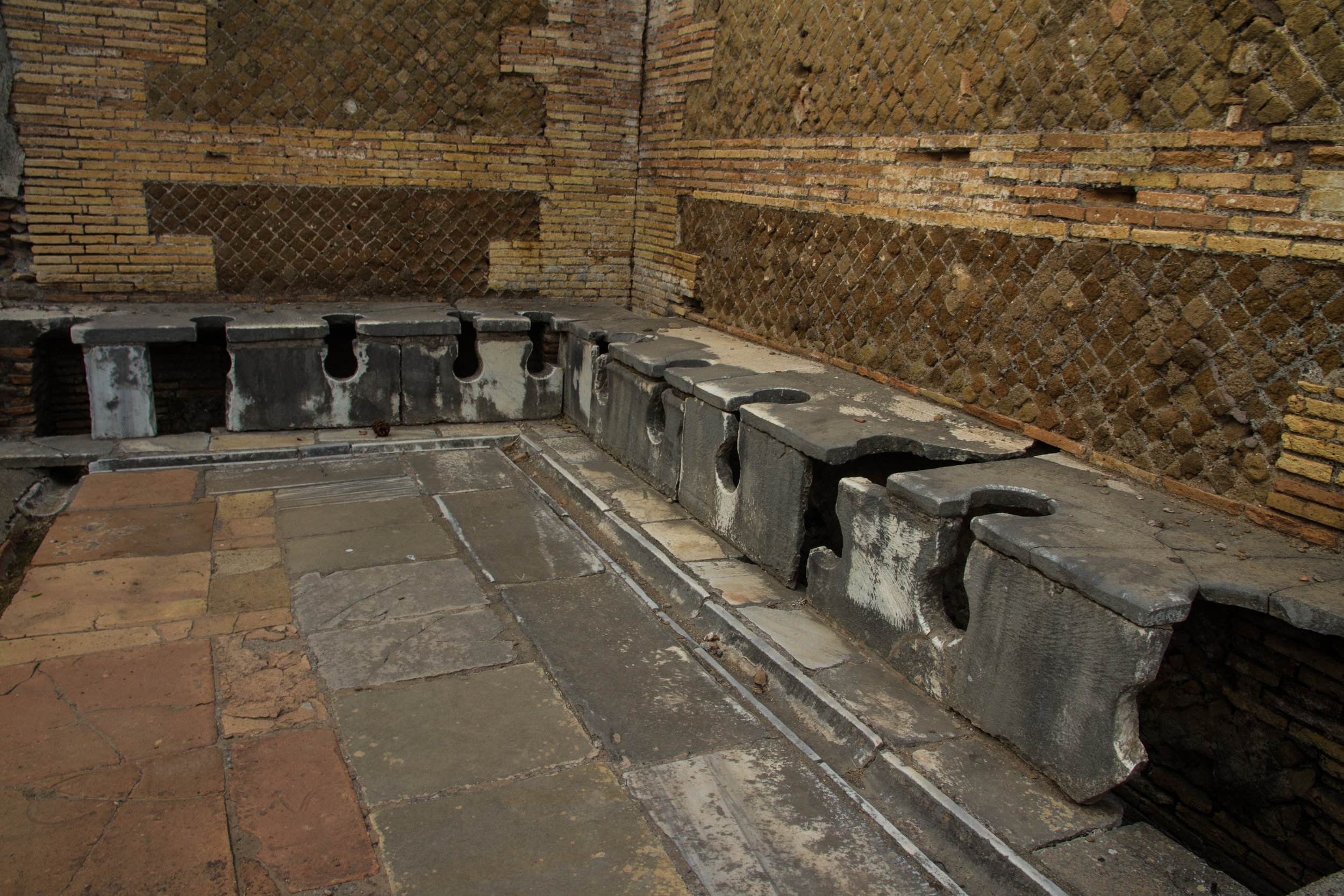The Rise of Indoor Plumbing: When Did Bathrooms Become Common In Homes

The development of indoor plumbing revolutionized sanitation and public health, transforming the way people lived and interacted with their environment. This transformative process involved a series of innovations, each contributing to the gradual shift from outdoor privies and shared wells to the modern bathroom we know today.
The Invention and Adoption of Running Water
The concept of piped water systems dates back to ancient civilizations. The Romans, for instance, developed sophisticated aqueducts to transport water to their cities, supplying public baths and fountains. However, these systems were often limited to urban areas, and the widespread availability of running water in homes remained elusive for centuries.
The invention of the water closet, or flush toilet, in the 16th century marked a significant step towards modern sanitation. This invention, attributed to Sir John Harrington, provided a more hygienic alternative to chamber pots and cesspits. However, the early flush toilets relied on gravity and were often cumbersome to use.
The Industrial Revolution in the 19th century brought about significant advancements in plumbing technology. The development of cast iron pipes, pumps, and water meters made it possible to deliver water to homes more efficiently and reliably. This led to a gradual increase in the adoption of indoor plumbing in cities and towns across the globe.
The Impact of Indoor Plumbing on Public Health and Hygiene, When did bathrooms become common in homes
The availability of running water and sanitation systems had a profound impact on public health. Prior to the widespread adoption of indoor plumbing, diseases such as cholera and typhoid fever were rampant, particularly in densely populated urban areas. These diseases were often spread through contaminated water supplies and inadequate sanitation practices.
Indoor plumbing significantly reduced the risk of waterborne diseases by providing a reliable source of clean water for drinking, cooking, and washing. The introduction of sewer systems allowed for the safe and efficient disposal of human waste, preventing the contamination of water sources and reducing the spread of diseases.
“The availability of indoor plumbing is a significant indicator of public health and the overall well-being of a society.”
Availability of Indoor Plumbing in Different Regions and Social Classes
The adoption of indoor plumbing was not uniform across different regions and social classes. In the early 20th century, indoor plumbing was primarily available to the wealthy in developed countries. As technology improved and costs decreased, access to indoor plumbing gradually expanded to middle and lower-income families.
In many developing countries, access to indoor plumbing remains limited, particularly in rural areas. This disparity highlights the ongoing challenges in providing adequate sanitation and water infrastructure to all populations.
- Urban vs. Rural: Urban areas typically had better access to indoor plumbing than rural areas due to the concentration of population and infrastructure. This disparity still exists in many parts of the world.
- Social Class: Indoor plumbing was often a privilege reserved for the wealthy, especially in the early stages of its adoption. As the technology became more affordable, access expanded to different social classes.
- Regional Variations: The availability of indoor plumbing varies significantly across different regions. Developed countries generally have higher rates of access than developing countries.
The Evolution of Bathroom Design

The evolution of bathroom design reflects not only changes in technology and materials but also shifting cultural values and ideas about hygiene, privacy, and personal space. From the humble beginnings of simple water closets to the sophisticated and luxurious bathrooms of today, the bathroom has undergone a remarkable transformation.
Early Forms of Bathrooms
Early forms of bathrooms were often rudimentary and focused on basic sanitation. In ancient civilizations like Rome, public bathhouses were common, but private bathrooms were rare. In medieval Europe, bathrooms were often little more than a room with a chamber pot, and the concept of a dedicated space for bathing was not widespread.
The Rise of Indoor Plumbing
The advent of indoor plumbing in the late 19th century revolutionized bathroom design. The introduction of running water, toilets, and bathtubs allowed for more sophisticated and hygienic sanitation.
The 20th Century: Materials, Fixtures, and Aesthetics
The 20th century saw significant advancements in bathroom design, driven by technological innovation and changing aesthetic preferences.
Materials
- Early 20th Century: Bathrooms were often clad in materials like tile, marble, and wood, reflecting the popular styles of the era.
- Mid-Century Modern: The mid-century modern movement emphasized clean lines, simple forms, and functional design. Bathrooms in this era often featured materials like chrome, stainless steel, and plastic.
- Late 20th Century: A wider range of materials became available, including acrylic, fiberglass, and synthetic stone. These materials offered durability, affordability, and versatility.
Fixtures
- Early 20th Century: Bathrooms featured traditional fixtures, including clawfoot bathtubs, pedestal sinks, and porcelain toilets.
- Mid-Century Modern: Modernist design principles influenced the development of streamlined fixtures, such as wall-mounted sinks, integrated vanities, and shower stalls.
- Late 20th Century: The focus shifted to functionality and convenience, leading to the development of features like water-saving toilets, showerheads with multiple spray settings, and heated towel racks.
Aesthetics
- Early 20th Century: Bathroom design was often influenced by Victorian and Art Deco aesthetics, featuring ornate details, elaborate fixtures, and decorative tiles.
- Mid-Century Modern: The mid-century modern era embraced minimalism, clean lines, and functional design. Bathrooms often featured simple, geometric shapes and neutral color palettes.
- Late 20th Century: Bathrooms became more personalized, reflecting a wider range of tastes and styles. Trends included the use of bold colors, eclectic patterns, and spa-like features.
The Influence of Cultural Trends
Cultural trends have played a significant role in shaping bathroom design. For example, the rise of the spa culture in the late 20th century led to the incorporation of features like rain showerheads, whirlpool tubs, and aromatherapy diffusers into bathroom design.
Technological Advancements
Technological advancements have also influenced bathroom design. For instance, the development of smart home technology has led to the creation of “smart bathrooms” that feature features like voice-activated controls, automated lighting, and temperature regulation.
The Social and Economic Factors

The widespread adoption of bathrooms in homes wasn’t simply a matter of technological advancement. Social and economic forces played a crucial role in transforming the bathroom from a luxury to a necessity.
Urbanization and Industrialization
The rapid urbanization and industrialization of the 19th century significantly impacted the adoption of indoor plumbing. As cities grew, overcrowding became a major issue, leading to unsanitary conditions and the spread of diseases. The lack of adequate sanitation facilities in densely populated areas made it clear that something had to change. Industrialization, on the other hand, brought about technological advancements that made indoor plumbing more affordable and accessible. The development of new materials like cast iron and the mass production of plumbing fixtures made it possible to install bathrooms in homes at a lower cost.
Rising Standards of Living
The rise of the middle class in the late 19th and early 20th centuries played a crucial role in the adoption of bathrooms. As people’s incomes increased, they began to demand better living conditions, including access to modern amenities like indoor plumbing. This demand spurred innovation and competition in the plumbing industry, leading to further cost reductions and improved designs.
Public Health Campaigns and Government Regulations
Public health campaigns and government regulations also played a significant role in promoting the adoption of indoor plumbing. In the late 19th century, public health officials began to recognize the link between sanitation and disease. They launched public awareness campaigns to educate people about the importance of proper hygiene and sanitation. Governments also began to implement regulations requiring new buildings to have indoor plumbing. These measures helped to improve public health and contributed to the widespread adoption of bathrooms in homes.
Examples of Social and Economic Factors
- The Great Sanitary Awakening in the 19th century, a period of intense public health reform, raised awareness about the importance of sanitation and hygiene, leading to increased demand for indoor plumbing.
- The development of the flush toilet in the 18th century made indoor plumbing more practical and efficient, making it more attractive to homeowners.
- The rise of public health regulations, such as the establishment of sewage systems and water treatment plants, made indoor plumbing more feasible and affordable.
- The growing middle class in the 19th and 20th centuries demanded better living conditions, including access to modern amenities like indoor plumbing, driving the market for these technologies.
